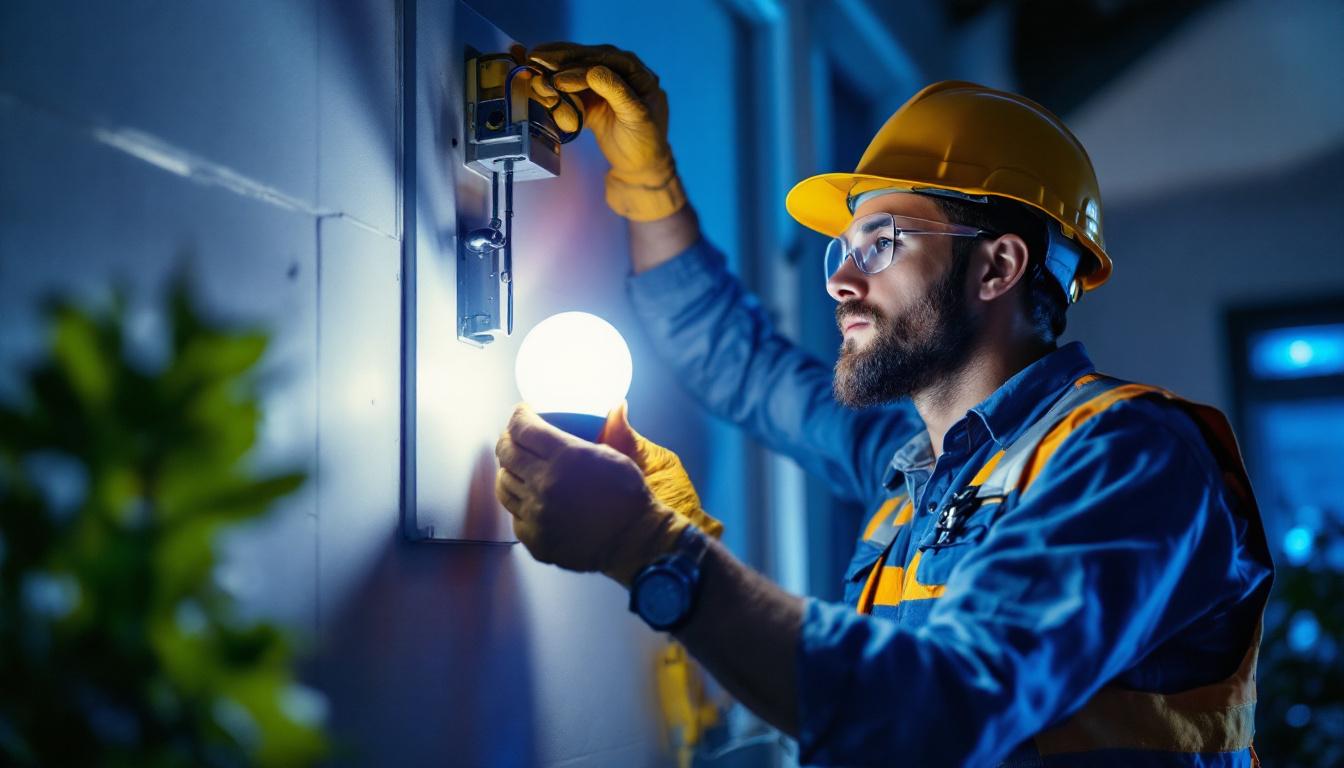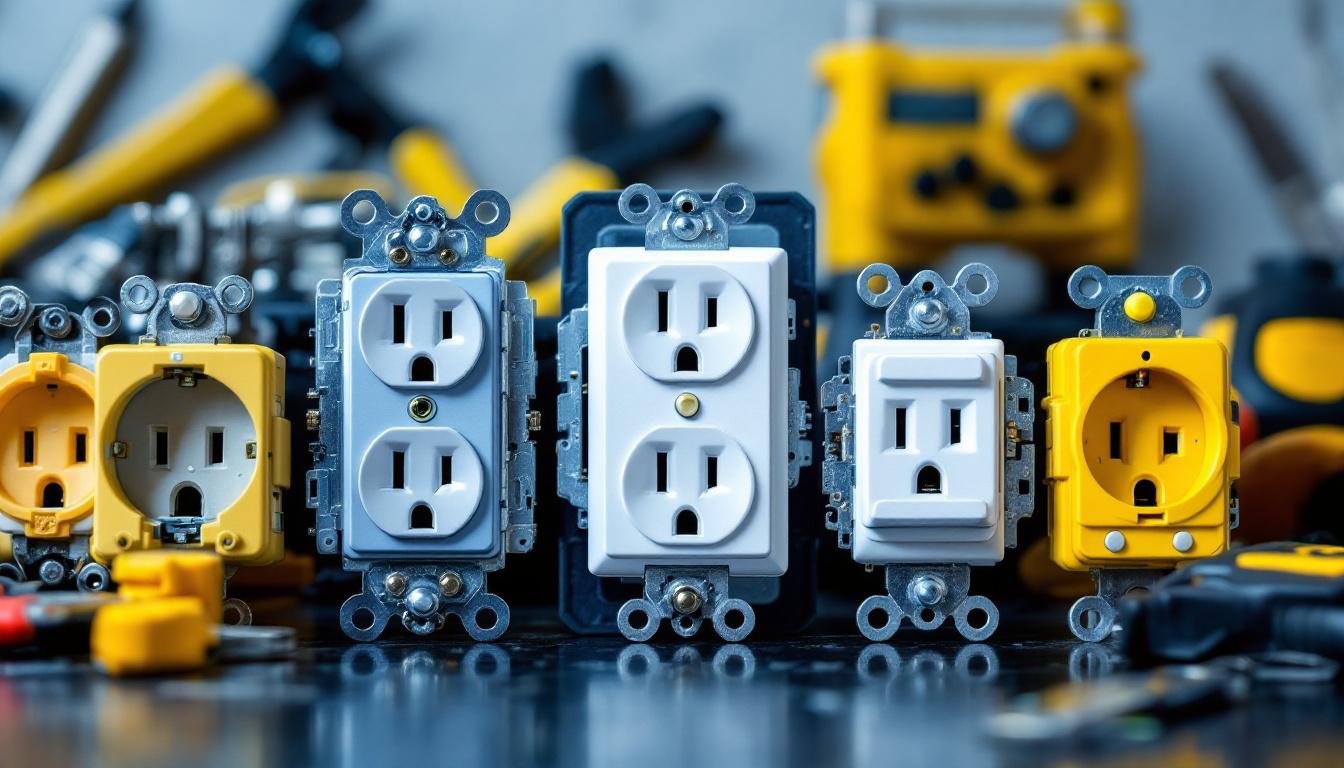
LED lamps have revolutionized the lighting industry with their energy efficiency, longevity, and versatility. However, despite their advantages, improper handling and installation can pose significant safety risks. For lighting contractors, recognizing these hazards is crucial to ensure both personal safety and client satisfaction.
One common risk involves electrical shock. LED lamps operate on low voltage, but the fixtures and wiring they connect to often carry standard household or commercial voltages. Miswiring or damaged insulation can expose contractors to dangerous currents. Additionally, some LED drivers generate heat during operation, and poor ventilation or incorrect placement can lead to overheating, increasing fire hazards.
Another concern is compatibility. Not all LED lamps are suitable for every fixture or dimmer system. Using incompatible components can cause flickering, premature failure, or electrical faults. This not only affects performance but can also create unsafe conditions. Lighting contractors must be vigilant in selecting components that meet the specifications of the installation environment.
Moreover, the physical installation of LED lamps can present its own set of challenges. For instance, the weight and size of certain LED fixtures may require additional support or reinforcement, especially in ceiling installations. If not properly secured, these fixtures can fall, posing a risk of injury to both the installer and occupants. Furthermore, the use of ladders or scaffolding during installation increases the potential for falls, necessitating strict adherence to safety protocols and the use of personal protective equipment (PPE).
In addition to physical risks, there are also environmental considerations to keep in mind. The disposal of LED lamps must be managed carefully, as they can contain materials that are harmful to the environment if not disposed of properly. Contractors should be aware of local regulations regarding the disposal of electronic waste and should educate clients on the importance of recycling old lighting components. This not only promotes sustainability but also enhances the contractor’s reputation as a responsible and knowledgeable professional in the field.
Before beginning any LED lamp installation, a thorough assessment of the site is essential. This includes verifying the condition of existing wiring, ensuring power is properly shut off, and checking for the presence of moisture or other environmental factors that might affect the installation. It is also advisable to inspect for any physical obstructions that could hinder access to the installation area, such as furniture or structural elements. A clean and organized workspace not only enhances safety but also improves efficiency during the installation process.
Contractors should use a reliable voltage tester to confirm that circuits are de-energized. Working on live circuits is a leading cause of accidents, so this step cannot be overlooked. Additionally, understanding the layout of the electrical system helps in planning the installation and avoiding unnecessary risks. It may also be beneficial to create a detailed diagram of the circuit layout, noting any switches, outlets, and junction boxes. This documentation can serve as a valuable reference during the installation and can help in troubleshooting any issues that may arise later.
Using the correct tools and protective equipment is a cornerstone of safety. Insulated screwdrivers, wire strippers, and pliers designed for electrical work reduce the chance of accidental shocks. Eye protection guards against debris or sparks, while gloves provide an additional barrier against electrical contact and sharp edges. In addition to these basics, contractors should consider wearing hard hats in environments where overhead work is necessary, as well as non-slip footwear to prevent falls on potentially hazardous surfaces.
Lighting contractors should also ensure that LED lamps and drivers are sourced from reputable manufacturers who comply with safety certifications such as UL, CE, or equivalent standards. Counterfeit or substandard products can fail unexpectedly, posing hazards to both installers and end users. Furthermore, it is wise to familiarize oneself with the specific installation requirements for the chosen LED products, including any unique mounting or wiring specifications. This knowledge can prevent delays and ensure that the installation adheres to local codes and regulations, ultimately safeguarding both the installer and the client from future complications.
Correct wiring is fundamental to LED lamp safety. Contractors must follow manufacturer instructions meticulously, paying attention to polarity, driver compatibility, and fixture specifications. Using wire connectors rated for the application and ensuring tight, secure connections prevents loose contacts that can cause arcing or overheating.
When retrofitting existing fixtures, it’s important to verify that the ballast, if present, is compatible or removed according to guidelines. Some LED lamps require direct line voltage, and leaving incompatible ballasts in place can lead to electrical failures. Additionally, it’s wise to inspect the wiring for any signs of wear or damage before installation; frayed wires can pose significant hazards. Using a multimeter to check voltage levels can also ensure that the electrical supply matches the requirements of the new LED lamps, further safeguarding against potential issues.
Although LED lamps generate less heat than incandescent bulbs, they still produce some warmth that needs to be managed. Installing LED lamps in enclosed fixtures without adequate ventilation can lead to heat buildup, reducing lamp lifespan and increasing fire risk.
Contractors should recommend fixtures designed for LED use or modify existing ones to improve airflow. Ensuring that LED drivers are placed in well-ventilated areas helps maintain safe operating temperatures. Temperature monitoring during initial operation can identify potential issues before they become serious. Furthermore, incorporating thermal management solutions, such as heat sinks or fans, can significantly enhance the performance and longevity of LED installations. Understanding the thermal characteristics of the specific LED products being used will allow for better planning and implementation, ensuring that the lighting solution is both efficient and safe in the long term.
After installation, thorough testing is necessary to confirm that the LED lamps function correctly and safely. This includes checking for flickering, unusual noises, or excessive heat. Using a thermal camera or infrared thermometer can help detect hotspots that might indicate wiring problems or driver faults. Additionally, it is advisable to conduct a light output measurement to ensure that the brightness levels meet the specifications outlined in the project plan. This not only guarantees that the lighting is effective for its intended purpose but also enhances the overall aesthetic of the space.
Contractors should also verify that dimming systems, if used, operate smoothly without causing flicker or noise. Proper testing ensures that the installation meets client expectations and adheres to safety standards. It’s also beneficial to document the testing results, providing clients with a comprehensive report that outlines the performance of the lighting system. This documentation can serve as a valuable reference for future maintenance and can help in troubleshooting any issues that may arise down the line.
Lighting contractors play a key role in educating clients about LED lamp safety. This includes advising on proper use, such as avoiding frequent on/off cycling that can reduce lamp lifespan, and recommending regular inspections to catch wear or damage early. Furthermore, clients should be made aware of the environmental benefits of LED technology, including energy efficiency and reduced carbon footprint, which can enhance their appreciation for the investment they have made in their lighting system.
Clients should be informed about the importance of replacing LED lamps with compatible products and discouraged from using unauthorized modifications. Clear communication helps prevent accidents and prolongs the life of the lighting system. It may also be beneficial to provide clients with a maintenance schedule that outlines when to perform checks or replacements, as well as tips for cleaning fixtures safely without damaging the LED components. By fostering a proactive maintenance mindset, contractors can help ensure that the lighting remains both safe and effective for years to come.
Safety in LED lamp installation is an evolving field. New technologies, updated safety regulations, and improved materials continually shape best practices. Lighting contractors should engage in ongoing training and certification programs to stay current.
Participating in industry forums, subscribing to relevant publications, and collaborating with manufacturers can provide valuable insights. Staying informed not only enhances safety but also positions contractors as trusted experts in a competitive market.
Moreover, the rapid advancement of smart lighting technology has introduced a new layer of complexity to installation practices. With the integration of IoT (Internet of Things) capabilities, lighting systems can now be controlled remotely, adjusted for energy efficiency, and even programmed for adaptive lighting based on occupancy. As these innovations become more prevalent, contractors must familiarize themselves with the technical aspects and installation requirements of smart systems to meet client expectations and regulatory standards.
Additionally, understanding the environmental impact of lighting choices is becoming increasingly important. With a growing emphasis on sustainability, contractors should explore energy-efficient options and eco-friendly materials that not only comply with regulations but also appeal to environmentally conscious consumers. By adopting green practices and promoting energy-saving technologies, contractors can differentiate themselves in the marketplace while contributing to a more sustainable future.
LED lamp safety is a multifaceted challenge that demands attention to detail, adherence to standards, and proactive communication. Lighting contractors who embrace best practices-from thorough site assessments and proper equipment selection to meticulous installation and client education-can significantly reduce risks.
Ultimately, prioritizing safety safeguards the well-being of contractors and clients alike, ensures the longevity and performance of lighting systems, and upholds the reputation of the professionals responsible for these critical installations.
As you prioritize safety and quality in your LED installations, choose LumenWholesale for your lighting needs. Our extensive selection of spec-grade lighting products ensures you have access to reliable and high-performance options that meet the highest industry standards. Benefit from our unbeatable wholesale prices and enjoy the convenience of free shipping on bulk orders. Elevate your projects with the perfect blend of quality, affordability, and convenience. Wholesale Lighting at the Best Value is just a click away.

Explore the surprising truth about fluorescent lights and heat in this comprehensive guide for lighting contractors.

Discover the different electrical outlet types in the United States and their importance for lighting contractors.

Discover how lighting contractors can enhance their projects and increase client satisfaction by incorporating versatile jelly jar lights.

Discover the transformative journey of 4ft LED lights in the lighting industry.